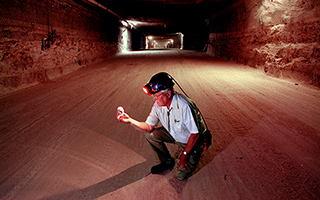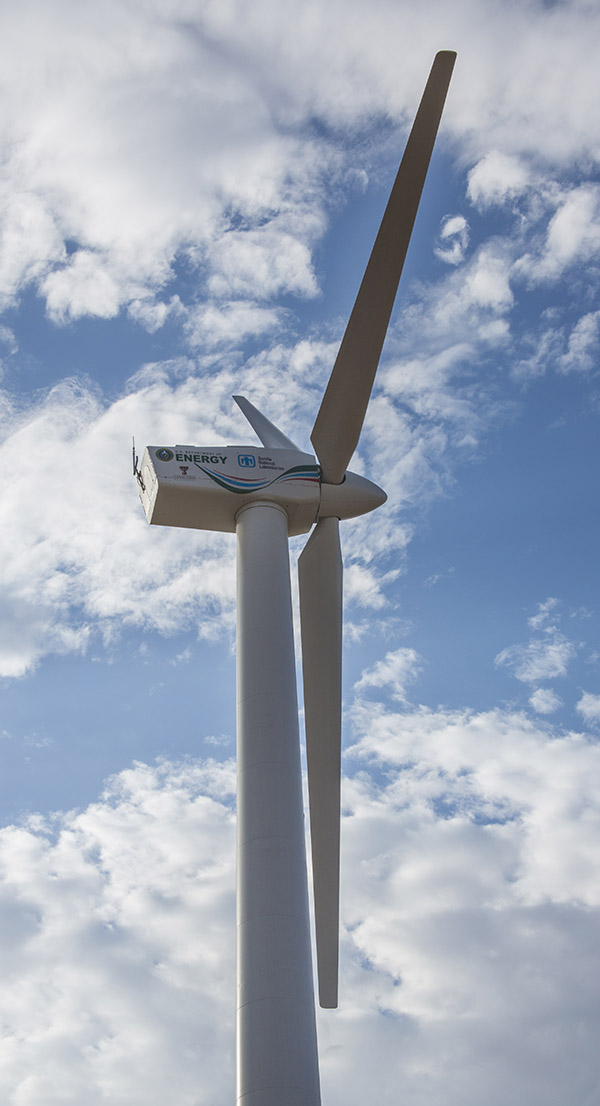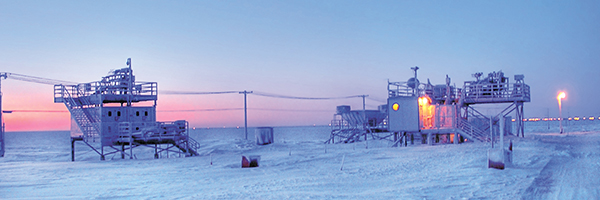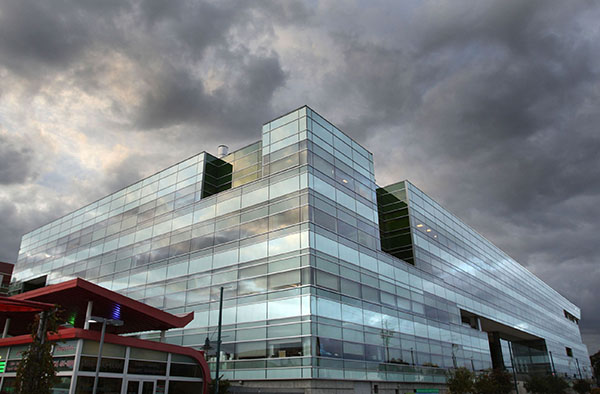Sandia’s Division 8000: It’s more than ‘just’ California now
Division 8000 has had a growth spurt. The May 1 transition to the Honeywell M&O contract added approximately 600 employees to the division, a result of consolidating energy programs.
“Consolidating our energy programs into one division makes it easier to focus on our energy customers and take advantage of the strong multiprogram roles that Center 8800, New Mexico Energy and Geoscience, plays,” says Division 8000 Associate Laboratories Director Dori Ellis.
In addition to moving programs and staff, the reorganization expanded the geographic footprint of Division 8000 to include the Carlsbad Programs Group; the Scaled Wind Farm Technology (SWiFT) facility in Lubbock, Texas; and two research sites in Alaska.

Keeping an eye on WIPP in Carlsbad
Sandia serves as science advisor to DOE’s Office of Environmental Management (via DOE’s Carlsbad Field Office) for the Waste Isolation Pilot Plant (WIPP) in Carlsbad, New Mexico. To that end, Sandia maintains offices, computing platforms, laboratories, and other technical capabilities in Carlsbad.
WIPP is the world’s only licensed and operating deep geologic repository for the permanent disposal of transuranic (TRU) waste. At WIPP, defense-related TRU waste streams are placed in excavations in ancient salt beds found 2,150 feet below the earth’s surface.
Sandia uses a suite of computer models and codes — informed with fundamental work in geochemistry, hydrology, and rock mechanics — to estimate the cumulative releases of radioactive materials from the repository 10,000 years into the future. Called performance assessment calculations, these estimates must be generated at least once every five years in connection with the periodic recertification of WIPP by the Environmental Protection Agency.
Funded continuously since 1975, Sandia’s WIPP work has evolved greatly over the years since the initial charge to characterize the site that became WIPP. “It could be argued that WIPP is the longest-running single project in Sandia history,” says Paul Shoemaker (8880), senior manager of the Defense Waste Management Programs group.
While about 50 workforce members live in Carlsbad, a far greater number have rotated through the site. Paul explains that most of the technical staff in Carlsbad start their Sandia career by working three to five years there before transferring to other Sandia locations.

Catching the wind in Lubbock
Less than 200 miles east of Carlsbad, Sandia is perfecting the art of capturing wind energy at DOE’s SWiFT facility in Lubbock, Texas. Located at Texas Tech University’s National Wind Institute Research Center, SWiFT is the first public facility to use multiple wind turbines to measure turbine performance in a wind farm environment. Current research focuses on wake steering: how to position wind turbines in a farm to maximize efficiency of the downwind turbines, which produce less energy than do upwind turbines.
“The S in SWiFT, which stands for scaled, is the most important characteristic of this facility. The cost difference is significant,” says David Minster (8821), manager of the Wind Energy Technologies department. “The turbines here are one-third the size of commercial turbines, but we can operate them at about 5 percent of the cost, so this really is a research facility. If you’ve driven past a wind turbine, chances are SWiFT had some impact on its design.”
David Mitchell (8821) has been the facility superintendent for the past two years and is the first Sandian permanently located at SWiFT. Many other researchers travel to SWiFT to conduct research for periods ranging from a few days to a few months. “It’s thrilling to conduct leading-edge wind research here,” he says.

An eye in the sky in Alaska
For the past 20 years, Sandia has maintained a presence in the nation’s northernmost state, managing the North Slope of Alaska atmospheric observatory. This observatory is part of the Atmospheric Radiation Measurement (ARM) Climate Research Facility, a national scientific user center funded through DOE’s Office of Science.
Working at two sites, Utqiagvik and Oliktok Point — both on the Beaufort Sea,
the northernmost spot in the United States — Sandia researchers and partners from other national labs and academia collect data about cloud and radiative processes at high latitudes. This data is then used to refine atmospheric models.
“Sandia has provided a continuous longitudinal data stream from our atmospheric testing, available to scientists worldwide,” says Lori Parrott (8863), manager of the Atmospheric Sciences department.
Four Sandia contractors live year-round as observers at Utqiagvik, and four others work two-week stretches at Oliktok Point. From March to October, as many as eight scientists may join the observers for short stints to conduct research and maintain equipment.
Earlier this month, Sandia researchers flew a tethered balloon and an unmanned aerial system together for the first time to collect Arctic atmospheric temperatures with better location control than ever before. See the Aug. 4, 2017, issue of the Lab News.
“Everything is harder in the Arctic,” says Lori. “With extreme weather, soppy tundra, and mosquitoes, it’s just more complicated up here. But this location also provides an extreme eye into a part of the globe where things are changing very rapidly.”

Developing biofuels in Emeryville
Another Division 8000 remote site is the Joint BioEnergy Institute (JBEI) in Emeryville, California, about 35 miles west of Livermore. Sandia has been a partner since JBEI was established in 2007 by DOE’s Office of Science, along with Lawrence Berkeley National Laboratory, the University of California campuses of Berkeley and Davis, the Carnegie Institution for Science, Lawrence Livermore National Laboratory, and Pacific Northwest National Laboratory.
About 30 Sandians work permanently out of JBEI, and many others split their time between Sandia’s Livermore site and JBEI.
“This is a different type of multi-lab research center in that it is a unique facility housed under one roof, rather than located across partner sites,” says Ben Wu (8610), senior manager of the Biosciences Programs group. “This creates a very special synergy among the staff.”
JBEI’s purpose is to advance the development of next-generation biofuels. Sandia is a key member of the Deconstruction and Technology divisions and contributes to JBEI’s other three divisions: Feedstocks, Fuel Synthesis, and Sustainability. JBEI was recently selected as one of four DOE Bioenergy Research Centers to be awarded a total of $40 million. This award extends JBEI’s funding through 2022.
Seeking a new name for Division 8000
With one-third of the workforce located outside of Livermore and sites scattered from Alaska to Texas — not to mention the Division’s role at places like the Strategic Petroleum Reserve in Louisiana and the 50 permanent telecommuting staff spread across the country —calling Division 8000 the California Laboratory has become a misnomer.
To reflect the Division’s larger geographic diversity and broad missions, Dori is asking all members of Division 8000 to suggest names that encompass the new division’s breadth and scope. Please email your suggestions to 8000-ALD-Office@sandia.gov.
“We oversee the energy and homeland security portfolios, but this Division touches every research area of Sandia,” says Dori. “We need a new name that encompasses all of the important work that is being conducted throughout Division 8000.”